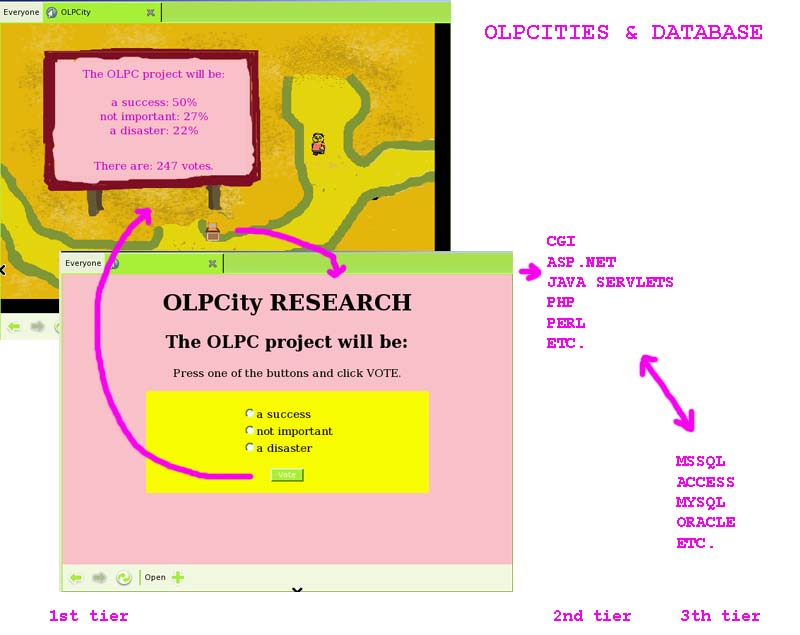OLPCities/Accessing Database: Difference between revisions
No edit summary |
No edit summary |
||
| Line 22: | Line 22: | ||
You can play with the demo (and vote - pay attention that the |
You can play with the demo (and vote - pay attention that the quantity of votes will change but not necessaryly the percentages ) going to: |
||
[http://www.dmu.com/olpctut/tut10.aspx http://www.dmu.com/olpctut/tut10.aspx]. |
[http://www.dmu.com/olpctut/tut10.aspx http://www.dmu.com/olpctut/tut10.aspx]. |
||
Revision as of 15:58, 27 September 2006
OLPCities works mainly in the 1st tier - the interface level - but can contact the 2nd (application at server) and 3th tiers (database).
At 2nd tier we can use ASP .NET (a good option because we can have JavaScript sintax) or Java Servlets or Java Server Pages or CGI using PHP or PERL etc.
An important "OLPC activity" using OLPCities can be researchs of opinions about many different subjects. It's important for kids to know that different persons can have different opinions.
At the demo of this lesson you can vote about the OLPC project. Will it be a success or a disaster?
The results are updated each time you go to the Lot having the panel of the percentages.
You can vote only one time. There are a flag (and a cookie) to control it. You can use another machine to vote again :-)
This application was created using ASP .NET and a Microsoft Access database. We will not present here the code because ASP .NET and SQL and Access are out of the scope of this tutorials serie.
You can play with the demo (and vote - pay attention that the quantity of votes will change but not necessaryly the percentages ) going to: http://www.dmu.com/olpctut/tut10.aspx.
